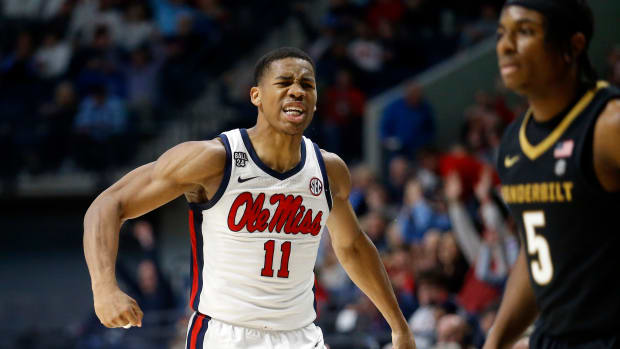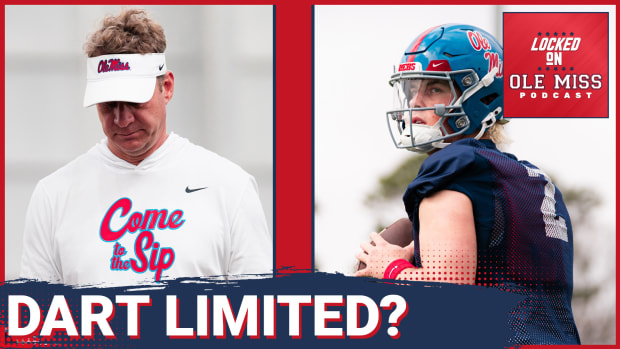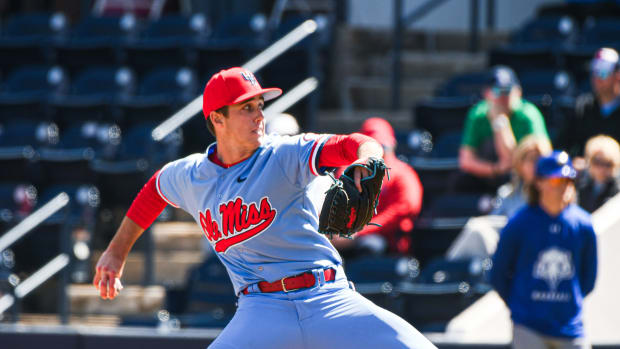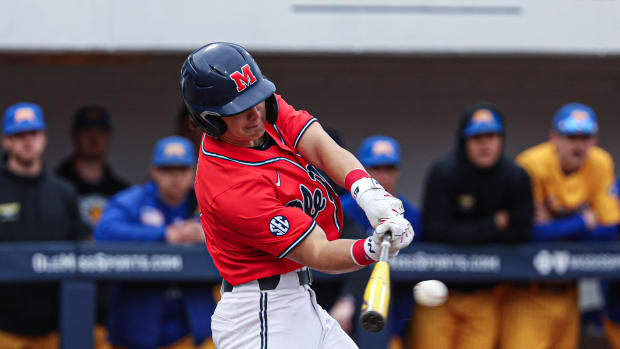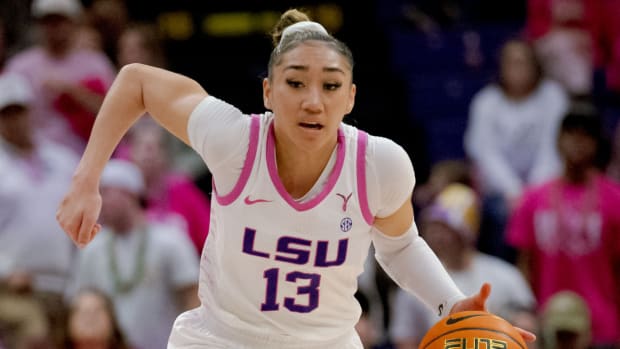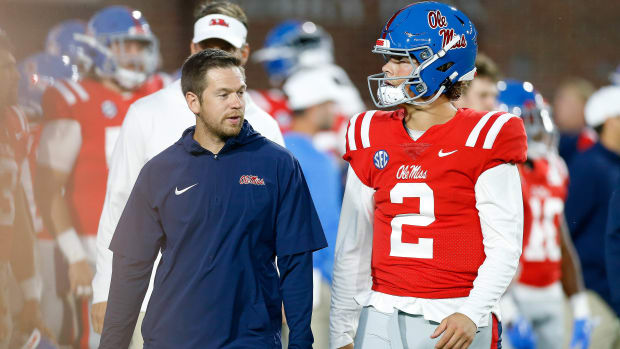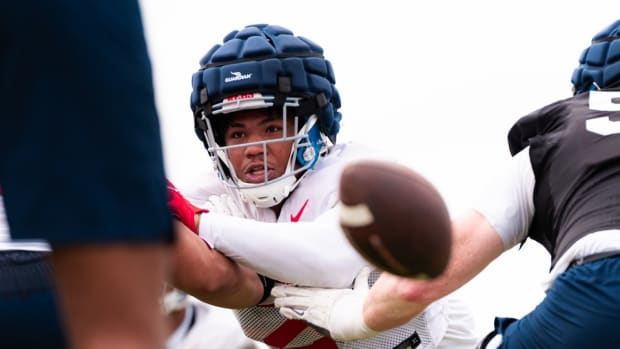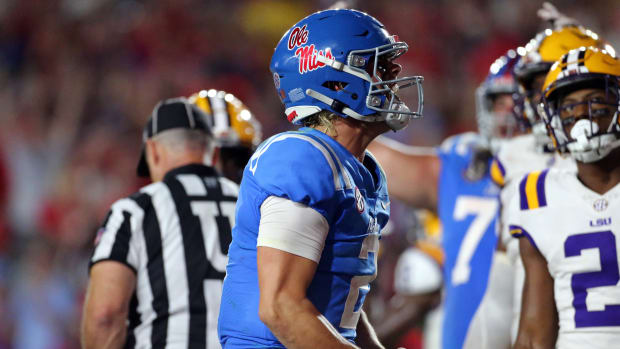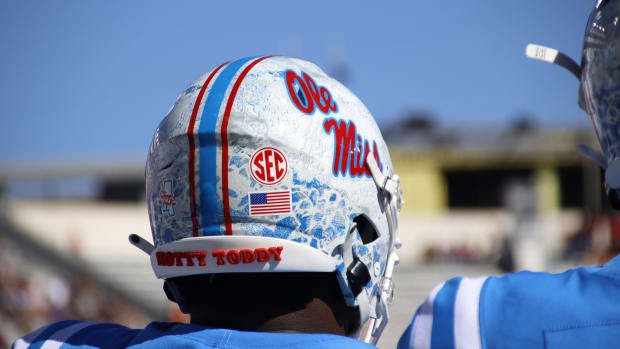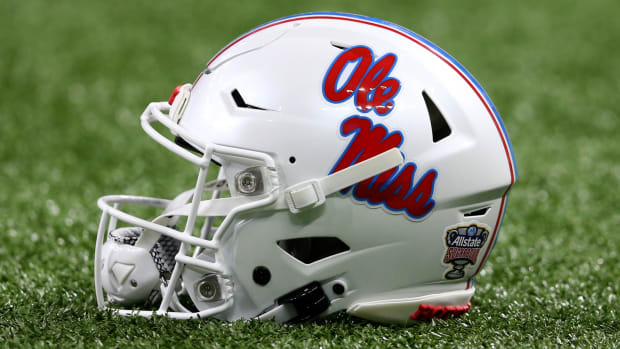Coaches Open Up on Transfer Atmosphere, Impact on Roster Building and Recruiting
Freshman quarterback Grant Tisdale put his name in the transfer portal in October, midway through Year 1 at Ole Miss. By December, he was back with the team.
Entering the portal is something that's all very common in college athletics nowadays. Tisdale didn't have a great relationship with a prior play-caller and the offensive coaching staff, but he liked Ole Miss. When Lane Kiffin took the job in December, it took the former four-star recruit out of Allen, Texas, just days to return to the program.
But that's more the rarity. Most kids that enter the portal never return. In 2018, of all the players on FBS football rosters nationwide, 11,792 had transferred at least once, a rate of 13.6%. That rate is even higher among men's basketball players (29.1%), and women's basketball players (19.5%).
The numbers seem to slowly rise every year. In 2010, the rate of FBS football transfers were 11.2-percent. Soon, they're likely to spike even higher.
The NCAA Board of Governors opposed the passing of the one-time transfer waiver in a meeting in April, however the D-I Council can still vote to pass it regardless. That vote happens later this month. Even if it were to not pass in 2020, most expect it to pass in coming years.
At Ole Miss, the coaches have all been pretty vocal about this new rule and the general state fo the transfer portal both recently and over the past few years.
“I can get in this portal so I can get some attention. We’re in a generation of just wanting attention no matter what. So now, I can go in this (portal), get an article written about me, and get re-recruited because I don’t like exactly how something’s going,” Kiffin said in March 2019.
But here's the thing—even the ones benefiting from the policies the most seem to have a sort-of disdain toward it.
The Ole Miss women's basketball program, coming off an 0–16 season in SEC play, signed the nation's No. 9 recruiting class. They then went and added a former five-star and No. 4 overall recruit in Maryland transfer Shakira Austin. All this, and their best player this upcoming year, according to the head coach, might just be another transfer. Donnetta Johnson came over from Georgia last year and sat out the 2019–20 season.
Yet despite being a big beneficiary of the process, it's still not one the program is fond of.
“It’s going to suck for future prospects and no one is really saying it. Say I have a (top recruit) and I’m telling them ‘you’re my best, you’re the world, you’re my joy.’ Well you’re not if I get a transfer that can come and play right away," said head women's basketball coach Yolett McPhee-McCuin. "Because at the end of the day you’re still a freshman that needs to go through the transition phase. I think that somebody needs to go and share that narrative. If you are top, you could easily go from top to third or second if the transfer situation goes through. So not only will it hurt us, as we don’t know what team we’re going to coach each year, but it’s also going to hurt the freshman I believe.”
As much as the transferring impacts who is on a team year-to-year, it also trickles down to high schoolers and recruiting.
John Garcia, Sports Illustrated's Director of Football Recruiting, explains that the way coaches are approaching numbers has completely changed.
In a normal year, football teams sign around 25 players, one of whom is a quarterback. Now, amidst fear of attrition through the transfer portal, teams are doubling up on some valuable positions like QB. So they bring in an extra player because one might leave, thus having more players that aren't going to play, thus likely leading to one of them transferring.
And it's not just quarterbacks affected—it impacts a handful of different subsections of high schoolers.
“It also hurts the bubble kids who are maybe developmental. That whole group suffers," Garcia said. "Now, instead of taking a guy who’s going to take 24 months to get on the field, you can get a player from another college who is going to be ready in six months. It’s a business where the lifespan of coaches is as short as it’s ever been, so the panic of roster maintenance is as high as it’s ever been.”
That roster maintenance is such a big factor, because the way teams manage their roster is completely different. On signing day this year, after Kiffin and Ole Miss singed only 18 players, he mentioned how he intentionally left roster spots open for spring transfers.
Instead of hitting that 85-scholarship limit, he was leaving holes for flexibility, just assuming some valuable pieces could be added through transfers during or after spring football.
“This is a different era of college football. It’s more like the NFL with how you manage your roster," Kiffin said. "These kids leave so often. We had maybe five go into the portal before we got here. They came back, but normally, they don’t come back. I think people plan on losing kids after spring, so that’s why we save some (roster spots). Because you’ll see a lot of kids leave after spring because it’s not going exactly the way they want."
Of course, spring football never happened this year. The COVID-19 pandemic has had its own impact on recruiting, as players have been unable to take visits and all recruiting is being done virtually.
However, some coaches even think they've been doing more recruiting now than ever. They're taking no trips and hosting no players, but they feel they are spending even more time recruiting over zoom calls or texts than ever.
“I think the new norm in college basketball is changing rosters and evolving rosters. So you have to be recruiting all the time. We’ll definitely see that in the next two or three years when this one-time transfer rule happens," said Ole Miss men's basketball coach Kermit Davis. “If you don’t adapt to this new phase of basketball, with what’s coming up. If you try and fight it, you’re not going to last long in our business.”
Garcia doesn't see this national trend in transfers slowing down anytime soon.
The rates have increased seemingly every year for a decade. Whenever this one-time transfer waiver is passed by the NCAA, he expects an even larger spike in the transfer rate.
As for the coaches, they're operating on the assumption that it's going to pass no matter what. Be it this year or the next, you have to be ready.
“It's inevitable. We waste time trying to figure out why. That’s just going to be what it is—kids are going to transfer," McPhee-McCuin said. "If it’s playing time, that’s going to happen. If they’re homesick, that’s just going to happen.”
You can join The Grove Report community by clicking "Follow" on the top righthand corner of the page. Also, be sure to like us on Facebook and follow us on Twitter @SIRebels and @nategabler.
